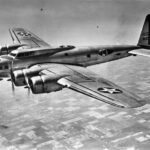Many readers are likely aware of the ongoing efforts to restore several Boeing B-17s to flight status, but one of the most ambitious projects is Mike Kellner’s in Marengo, Illinois. He and his team are working to resurrect B-17E “Desert Rat”41-2595, a combat veteran Flying Fortress that once bore the nicknames Desert Rat and Tangerine. As we’ve previously reported, Kellner discovered the aircraft in a farmer’s field near Bangor, Maine in the mid-1980s, where it lay as a collection of disassembled components. Remarkably, Kellner had the vision to see this jumble of battered parts restored into an airworthy B-17.

The project officially began in the mid-1990s, and despite working on a shoestring budget, Kellner and his dedicated volunteers have made incredible progress. The Fortress is steadily coming together. Interestingly, the aircraft didn’t serve as a bomber during its combat life in the China-Burma-India theater; instead, it was converted into a cargo plane prototype known as the XC-108A. Nevertheless, Kellner is restoring the aircraft to its original B-17E configuration, recreating the way it looked when it rolled off Boeing’s production line in Seattle in April 1942.

When complete, Desert Rat will be the oldest Flying Fortress in the skies—though that title may one day be surpassed by a B-17C that Kellner’s team also has on their restoration list. While the project has made great strides, it still needs support. But before we share how you can help, we thought you’d enjoy a recent conversation with Bill Stanczak, a dedicated volunteer and project manager with the FAA.

Bill reflected on the team’s expectations from August 2023, the time of our last update, when high hopes were pinned on restoring the bomb bay and cockpit. Unfortunately, restoration projects rarely go as planned. The bomb bay remained disassembled, with catwalks and compression struts out, forcing the team to focus on remanufacturing several corroded components. Despite these setbacks, new volunteers have stepped up to help, particularly with the complex plexiglass work on the nose cone—a multi-piece structure unique to the E model.

Another ongoing project involves restoring the outboard wing panels, which have square and round tubing alongside corrugated longitudinal stiffeners. The search for a company capable of producing the correct sine-wave corrugation has proven difficult, with cost and availability remaining hurdles. One major success has been the work on nacelle #4. Initially, in better-than-expected condition, corrosion was discovered after cleaning the skins, prompting a full re-skinning. Stainless steel components were also refurbished and bearings replaced, marking significant progress. The team has also made headway with the original 37-gallon oil tanks. One of these tanks has been cleaned and polished, with tests soon to confirm its viability for use. Bill emphasized their commitment to reusing as much original equipment as possible, balancing historical preservation with safety.


Bill mentioned that while the restoration is well underway, financial support remains crucial. As with any project of this magnitude, parts and labor are expensive, and the team strives to make every dollar count. Even small donations can make a significant impact. For those passionate about preserving aviation history, this restoration serves as a testament to the dedication, skill, and perseverance required to bring a legend like the B-17 back to the skies. With continued support, this Flying Fortress will one day soar again. This article reflects on the tireless efforts and challenges faced by warbird restoration teams, as they balance historical accuracy, modern compliance, and the search for scarce parts.
Desert Rat also has its own dedicated Facebook page HERE which some of our readers may enjoy viewing too. If you wish to contribute to the restoration of this important aircraft, whether it be with parts, labor or cash, please contact the Desert Rat team HERE. Monetary donations can be placed HERE.






































